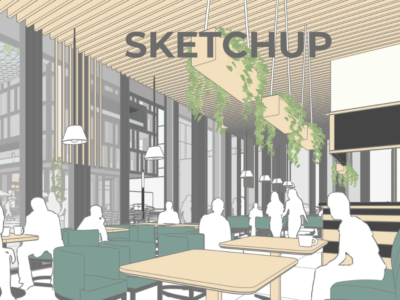Creo, developed by PTC (Parametric Technology Corporation), is a powerful suite of computer-aided design (CAD) software tools widely used in product design and development. Here’s an overview of Creo:
1. **Parametric Modeling**: Creo is renowned for its robust parametric modeling capabilities, allowing engineers and designers to create precise 3D models by defining parameters and constraints. This parametric approach enables easy modification and adaptation of designs throughout the product lifecycle.
2. **Versatility**: Creo offers a wide range of tools beyond parametric modeling, including direct modeling, surface modeling, sheet metal design, and assembly management. This versatility caters to various design requirements and workflows, from conceptualization to detailed design and simulation.
3. **Collaboration and Interoperability**: It supports seamless collaboration across teams and disciplines through its ability to import and export various CAD formats. This interoperability ensures compatibility with other software tools and facilitates integration within diverse design ecosystems.
4. **Simulation and Analysis**: Creo integrates simulation and analysis capabilities, allowing engineers to validate designs for strength, motion, and thermal performance directly within the CAD environment. This helps in optimizing designs and reducing physical prototyping costs.
5. **Product Lifecycle Management (PLM) Integration**: As part of PTC’s suite of product development solutions, Creo connects with PLM systems to manage product data, revisions, and workflows efficiently. This integration enhances collaboration, data management, and traceability across the entire product lifecycle.
6. **Industry Applications**: Creo finds extensive use across industries such as aerospace, automotive, consumer products, electronics, and healthcare. Its capabilities support the creation of complex geometries, intricate assemblies, and innovative designs required in modern product development.
7. **Continuous Development**: PTC continues to enhance Creo with regular updates and new features, keeping it at the forefront of CAD technology. This commitment to innovation ensures that Creo remains a preferred choice for companies seeking advanced design and engineering solutions.
What you’ll learn
• You will learn and develop professional Engineering CAD Modelling skills including Surface and Solid Modelling.
• You will learn to create Engineering Drawings for Cad Models and Assemblies.
• You will learn to apply mechanical constraints to your assemblies.
• You will learn how to create sample CAD models for the Aerospace, Automotive, Mechanical and Technical Industries through in-depth exercises.
Who this course is for:
• • Students who want to boost their CAD Modelling and Technical skills – this course will elevate any CV!
• • Professionals looking to polish their skills and get back to the fundamentals of CAD Modelling.
• • Anyone with the creativity to come up with product design ideas but needs the skills to create their products whether in 2D, 3D or both!
• • Anyone looking to develop new, highly in-demand, technical skills and move into a new industry.
Requirements
• You need CREO Parametric – Any version will do! (This course is created using CREO Parametric 7.0)
• You need a computer and basic computer skills
• You don’t need any previous experience or knowledge of CAD Modelling, CREO with Chris will make you a PRO!
Course Features
- Lectures 69
- Quiz 0
- Duration 4 weeks
- Skill level All levels
- Language English
- Students 29
- Certificate No
- Assessments Yes






